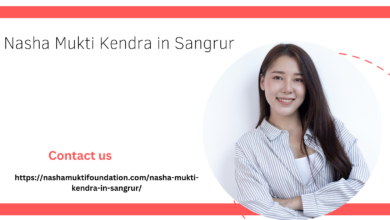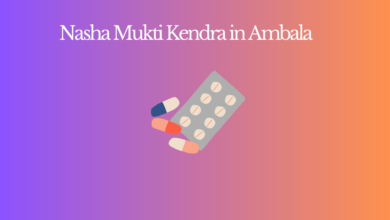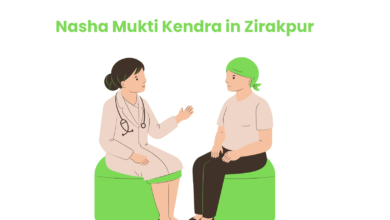What Happens in Nasha Mukti Kendra: A Comprehensive Guide
Introduction to Nasha Mukti Kendras
Nasha Mukti Kendras, also known as de-addiction centers, play a crucial role in helping individuals overcome substance abuse and addiction. These centers offer structured programs designed to address both the physical and psychological aspects of addiction, providing patients with the tools they need to live a sober and fulfilling life.
Nasha Mukti Kendras are specialized centers focused on rehabilitating individuals struggling with various forms of substance addiction, including alcohol, drugs, and prescription medication. These centers create a supportive environment where patients can undergo treatment, heal from the impact of addiction, and work towards long-term sobriety.
The Purpose of a Nasha Mukti Kendra
The primary goal of a Nasha Mukti Kendra is to provide individuals with the necessary treatment and resources to overcome addiction. Through a combination of medical intervention, psychological counseling, and holistic therapies, these centers help patients regain control of their lives and prevent relapse.
Admission Process in a Nasha Mukti Kendra
Upon admission to a Nasha Mukti Kendra, patients undergo a detailed evaluation to assess their physical and mental health. This helps the medical team design a personalized treatment plan based on the severity of the addiction, the type of substance abused, and any co-occurring disorders.
Initial Assessment
The first step in the admission process is an in-depth assessment. This involves a series of medical tests and psychological evaluations to understand the patient’s health condition and the impact of addiction on their life. The results of this assessment are critical in developing an individualized treatment plan.
Detoxification Plan
Once the assessment is complete, the patient begins the detoxification process. Detox aims to rid the body of harmful substances accumulated through substance abuse. The plan is tailored to each patient, ensuring that detox is as safe and comfortable as possible.
Detoxification Process
The detox phase is one of the most challenging stages in the treatment process. It involves managing withdrawal symptoms, which can range from mild discomfort to severe health risks, depending on the substance used and the duration of addiction.
Medical Supervision and Support
Throughout the detoxification process, patients receive round-the-clock medical supervision to manage any complications that arise during withdrawal. This supervision ensures that the detox process is as smooth and safe as possible.
Managing Withdrawal Symptoms
Withdrawal symptoms can vary in intensity, depending on the substance and the individual’s history of use. Common symptoms include nausea, anxiety, depression, tremors, and in severe cases, seizures. Medications may be administered to ease these symptoms and ensure patient safety.
Types of Therapies in Nasha Mukti Kendras
Nasha Mukti Kendras utilize a variety of therapeutic approaches to address the psychological aspects of addiction. These therapies help patients understand the root causes of their addiction and develop coping strategies for life after treatment.
Counseling and Behavioral Therapies
Individual counseling sessions provide patients with a safe space to discuss their struggles with addiction. Behavioral therapies, such as Cognitive Behavioral Therapy (CBT), are often used to help patients change harmful patterns of thinking and behavior that contribute to addiction.
Group Therapy and Peer Support
Group therapy sessions allow patients to share their experiences with others who are going through similar struggles. This peer support is invaluable in fostering a sense of community and reducing feelings of isolation during recovery.
Holistic Treatment Approaches
In addition to traditional therapies, many Nasha Mukti Kendras offer holistic treatments such as yoga, meditation, and art therapy. These approaches aim to heal the mind, body, and spirit, offering a more comprehensive path to recovery.
Inpatient vs. Outpatient Treatment
When deciding on the best treatment option, patients and their families often have to choose between inpatient and outpatient programs. Both have their advantages, and the decision depends on the severity of the addiction and the individual’s needs.
Key Differences and Suitability
Inpatient treatment involves staying at the facility for the duration of the program, offering a more immersive experience with constant supervision. Outpatient treatment allows patients to receive therapy while living at home, making it ideal for those with milder addictions or strong support systems.
Benefits of Inpatient Care
The primary benefit of inpatient treatment is the 24/7 access to medical and therapeutic support, which can be critical for those dealing with severe addiction or complicated withdrawal symptoms. The structured environment also reduces the risk of relapse.
Relapse Prevention and Aftercare Programs
A key component of any successful recovery plan is aftercare, which focuses on preventing relapse and maintaining sobriety after leaving the Nasha Mukti Kendra.
Strategies to Maintain Sobriety
Aftercare programs may include regular therapy sessions, support groups, and continuous monitoring to help patients stay on track. Patients are also taught practical strategies for avoiding triggers and managing stress without turning to substances.
Role of Family in Recovery
Family involvement is crucial during the recovery process. Many Nasha Mukti Kendras offer family counseling and education sessions to help loved ones understand addiction and learn how to support the patient’s long-term sobriety.
The Role of Nutrition and Physical Fitness in Recovery
Recovery from addiction isn’t just about breaking free from substances; it’s also about restoring physical health. A well-rounded recovery plan includes proper nutrition and physical fitness.
Importance of Healthy Eating
Substance abuse can take a toll on the body, often leading to nutritional deficiencies. A balanced diet rich in vitamins, minerals, and proteins is essential for physical recovery and mental clarity during the treatment process.
Fitness and Rehabilitation
Regular physical exercise is encouraged as part of the rehabilitation process. Exercise helps reduce stress, improve mood, and rebuild strength, all of which are important in the recovery journey.
Success Rates and Challenges in a Nasha Mukti Kendra
While Nasha Mukti Kendras are effective for many individuals, the success rate can vary depending on factors such as the individual’s commitment, the severity of the addiction, and the support system in place after treatment.
Myths and Misconceptions about Nasha Mukti Kendras
There are several misconceptions about Nasha Mukti Kendras, including the belief that they are only for severe cases of addiction. In reality, these centers are suitable for anyone struggling with substance abuse, regardless of the severity.
FAQs about Nasha Mukti Kendras
How long is the treatment in a Nasha Mukti Kendra?
Treatment duration varies depending on the individual’s needs but typically ranges from 30 to 90 days.
Are Nasha Mukti Kendras effective?
Yes, Nasha Mukti Kendras can be highly effective for individuals who are committed to recovery and follow the treatment plan.
What are the costs associated with a Nasha Mukti Kendra?
Costs can vary based on the location and services provided, but many centers offer affordable options or payment plans.
Can family members visit during treatment?
Yes, most Nasha Mukti Kendras allow family visits during designated times to maintain patient focus while offering
If you or a loved one is struggling with addiction, our Nasha Mukti Kendra in Jammu is here to help. With a team of experienced professionals, personalized treatment plans, and a supportive environment, we are committed to guiding you through every step of recovery.
Don’t wait—reach out today and take control of your future. Call us now to learn more about our programs and start your journey towards a healthier, happier life.



